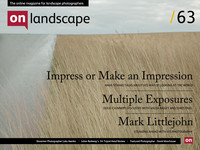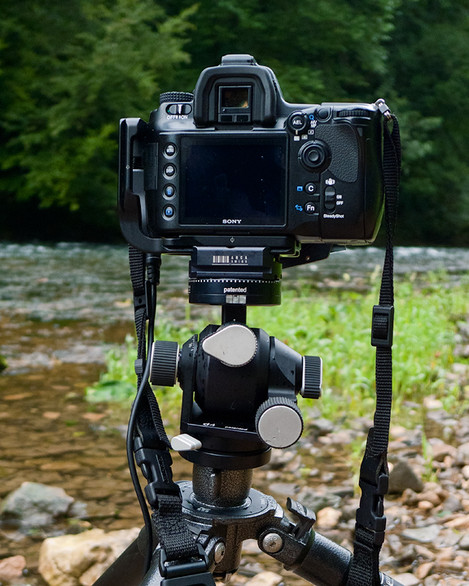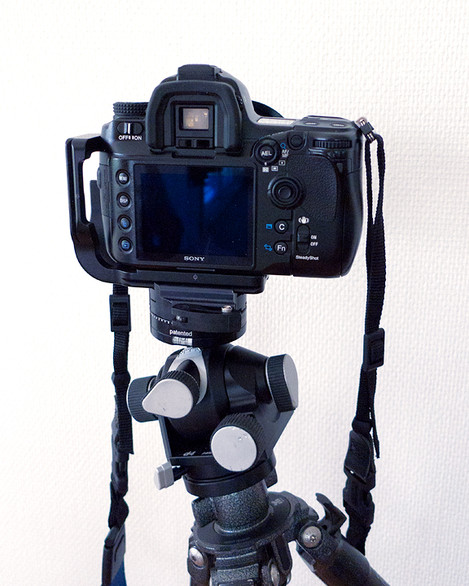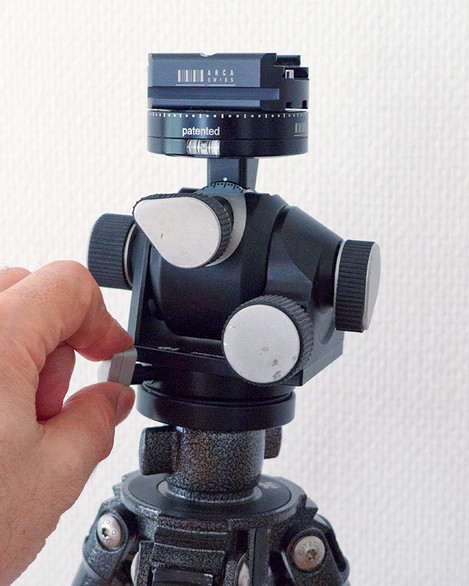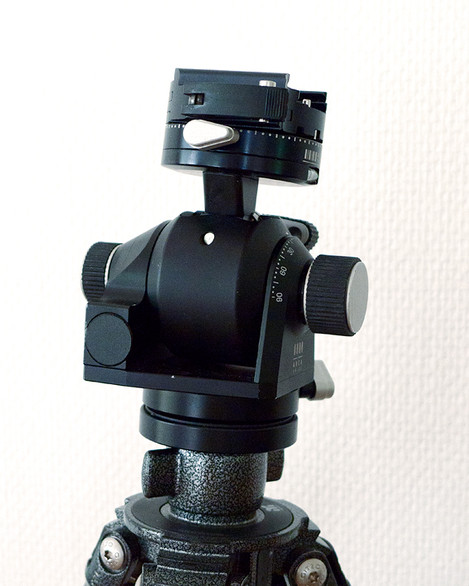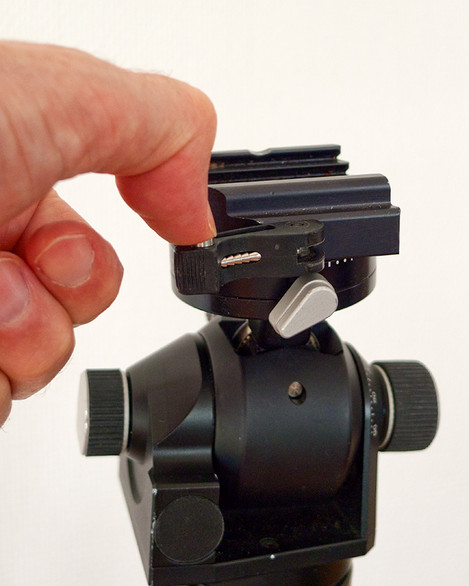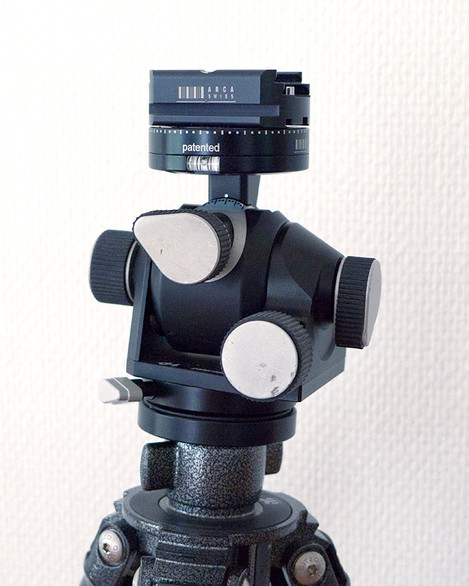Long Term Report

Julian Barkway
Iam what can best be described as an enthusiastic amateur photographer. I try not to follow fashion or trends and I’m never happier than shooting with my 5x4 camera on good old sheet film. The intimate landscape is what interests me which is, perhaps, surprising given that I have been based in Switzerland for a number of years. My favoured habitat is the bottom of a rocky gorge but I do occasionally emerge to shoot the bigger vista. And I do occasionally shoot digital - but shhh, don’t tell anyone! website
A while back, Dave Tolcher reviewed the then quite new Arca Swiss d4 geared head. This report picks up where he left off and rounds out his observations with some solid experience gleaned over the past 18 months of using the Arca d4 in the field and compares it to the cheaper Manfrotto 410 Junior Geared Head with which some readers may be familiar (and which I also own).
Let's get one thing out of the way first. The Arca d4 is not cheap. It's not as expensive as its beautifully-engineered big brother, the Arca Cube, but it is more expensive than Arca's excellent ball-heads and considerably more expensive than Manfrotto's capable 410 (not to mention the larger and beefier 405). So why would you even consider it when there are good and much cheaper alternatives? Well, let's say you've shelled out for a top-notch camera - a 5d or a D800, say - and a bag of lenses that are more than a match for it. This is no small investment so you really need a camera support that won't let you down when it matters. It therefore makes sense to pair a high quality camera with the best tripod and head you can afford. Futhermore, if precision of composition is important to you, you simply cannot beat a good geared head.
Arca Swiss started out in the 1950's as a manufacturer of large-format view cameras based in Zurich - hence 'Swiss' (the other part of their name is derived from 'All-Round CAmera'). And they still sell view cameras to this day, as well as a range of innovative tripod heads. Although now based in eastern France, they remain a small, independent company with, it has to be said, a wilfully old-fashioned approach to marketing. Don't go looking for their web site: it doesn't exist! Unlike Manfrotto, they are not a volume manufacturer so are unable to take advantage of economies of scale to drive prices down, which goes some way to explain the price differential. As can be expected of a small company trading on Switzerland's reputation for engineering excellence, the quality of their product line-up is peerless. So, as might be expected, in use the d4 feels solid, precise, tactile, reliable. There are other advantages too which all add up to a better product than the Manfrotto, in my opinion, but is it worth the not inconsiderable premium? I've been using the d4 for around 18 months now and have owned a Manfrotto 410 for considerably longer than that. So, let's see how well the d4 stacks up against the 410 in the field.
Arca D4 Finish and design
The Arca is a well-made bit of kit, make no mistake, with a finish and a precision 'feel' to match. In a similar way to Leica cameras, Arca Swiss products have that quality 'engineered' feel that exudes attention to detail. All the knobs are metal castings (at a guess, magnesium) and the shell is smooth anodised to give a very tactile feel. Despite all this metal, it tips the scales at around 400g lighter than the Manfrotto 410 - a significant advantage when you're hiking to a remote location. The main controls are surrounded with grippy ridged rubber and, because of this, are more positive in feel and easier to turn than the lightly textured plastic of the Manfrotto.
Although they are roughly the same height, the Arca is a lot more compact. This is partly by virtue of the fact that the left-right tilt mechanism is contained wholly within the axis of the up/down tilt but also because of smaller gears - which equates to the sort of fine control that allows millimetre-perfect adjustment. The shorter radius of movement means a minimum of 'travel' in the camera itself meaning that your composition is less likely to drift. Major control knobs are smaller and positioned closer to the body of the head all of which gives the d4 a neat appearance, quite at odds with the rather ungainly look of the Manfrotto with its knobs that protrude at all angles. Given the general punishment meted out to landscapers' tripods, a more compact design means there is less likelihood of damage to sensitive parts.
One big difference in design philosophy is that, while the 410 has gears on all three axes of movement, only two are geared on the d4: rotation about the Y-axis is not geared at all. Instead, you release a tiny locking screw and can then freely rotate the camera. In practice, the rotation is silky-smooth and so well-damped that gearing seems unnecessary. Just don't forget to re-tighten the locking screw!
Usability
A major advantage of the d4 is the inclusion of a rotating camera-platform in addition to the possibility of rotating the head itself, thus allowing level panning even when the head is set at an angle. This too has a quality feel as well as an equally tiny locking screw. However a word of caution: if you use top rotation and then need to make further adjustments you do run the risk of the camera position being 'out of synch' with the axes of the geared movements such that a simple left-right adjustment also has an effect on the up-down axis. Not a big problem in the field but something you do need to be aware of. This extra flexibility comes with a cost attached.
Both heads are limited to around 30° of upward tilt and 90° downward. Should you wish to shoot vertically upwards with the Manfrotto the only solution is to unscrew the QR plate from the camera, turn it 180° and reassemble. However, The rotating camera-platform of the d4 has a further advantage: it allows you to simply rotate the camera itself through 180° whilst the platform is tilted at an angle of 90° without even removing it from the tripod - quicker and much more convenient.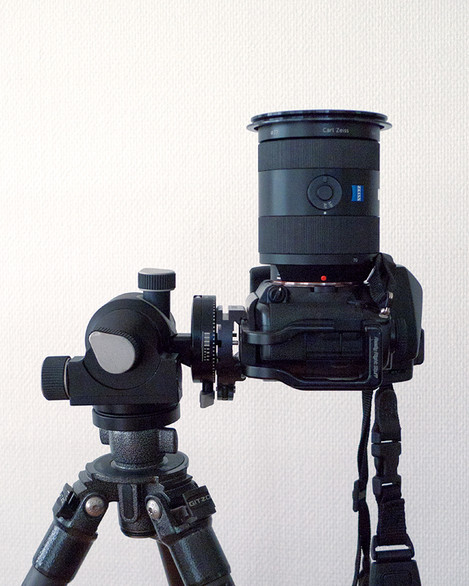
An important aspect of a geared head is what Arca term 'free-wheeling' - being able to disengage the gears so as to move the camera quickly to the desired orientation before re-engaging the gears for fine-tuning. Here, Arca and Manfrotto once again show divergent thinking. On the 410, you turn a spring-loaded collar surrounding the associated gear knob and this instantly separates the cog from the worm, flipping back as soon as you release the pressure, while the d4 offers a double action, both disengaging the cog and acting as a progressive brake on the ease of movement.
To facilitate this, each release cam is set at 90° to the control with which it is associated - somewhat unintuitive at first. However, whilst the Manfrotto can allow the camera to flop around alarmingly when the gears are released, the progressive action of the Arca clutch means that the camera feels more secure albeit at the cost of having to remember to fully tighten the locks for maximum rigidity. The Manfrotto's design means you don't have to worry about such things, but it has to be said that the clutches do not always re-engage the gears cleanly and sometimes there is an alarming jump as the cog slides home.
The d4 counters the 410's sprung clutches with a useful trick: if you disengage all the locks at the same time, the d4 functions almost like a ball-head allowing free movement about each axis. This is theoretically possible to achieve with the Manfrotto but not without an additional pair of hands.
Whilst the major knobs on the d4 are ideally sized, the same cannot be said for the locking cams on the d4's rotating base and camera-platform which really are tiny! They need to be small so as not to foul the camera or tripod, of course, but this makes them very fiddly to use - and, it must be said, not entirely immune to fouling. Care must be taken when aligning the head so as not to impede the movement of these controls.
Camera clamp
Arca offer the head with both their flip-lock and their traditional clamps. Sadly these are not interchangeable so you are stuck with your choice if you get it wrong. Choose well at the time of purchase!
By contrast, Manfrotto offer an over-sized captive camera-plate which engages with a positive click and is easy to disengage with a large two-step lever and button combination. Not quite as flexible as Arca's clamp system but simpler to use and very rigid.
Being used to the Manfrotto style of quick-release, I plumped for the flip-lock option when I bought my d4. In use, this can be fiddly and, occasionally, temperamental when impatience or fatigue leads one to forget the simple knack of disengaging the tiny metal stud and then pulling the equally small locking-rod out with a fingernail. It's very well-made, simple and almost jewel-like in its precision but why it can't be a wee bit larger, I don't know. Equally problematic is adjusting the tension of the locking jaws - like when having to accommodate the differing tolerances of a Really Right Stuff 'L' bracket on my DSLR and a genuine Arca plate on my view camera, for example. The thumb-wheel that operates this adjustment is minuscule making it difficult to see let alone operate with a stubby male digit! But the worst is that it is not a captive screw and over-enthusiastic adjustment can lead to the whole thing coming apart. Putting it all back together is tricky - particularly on location. Trust me, I know. That said, these are criticisms of Arca's flip-lock design and therefore have no bearing on the operation of the d4 itself - but it is something to bear in mind should you feel yourself drawn to this particular option.
Durability
Now I'm no pro and had no real problem with the reliability of my Manfrotto 410 other than with its vulnerability to being clouted whilst hiking to my chosen spot. But if you are often out in all weathers, hiking considerable distances and using your tripod day in, day out it will inevitably take a beating and questions have been asked about the long-term reliability of the Manfrotto geared heads. Whilst I can't get out with my camera as often as I'd like, I don't believe in mollycoddling my gear either. My d4 has variously been dropped from the back of a minibus onto tarmac, fully submerged in a sluice, scraped against countless boulders and been covered in mud as I slid down a steep earth bank on my backside (don't ask). Despite this, it functions every bit as precisely and slickly as it did when I first unpacked it, albeit with a few minor scuff marks here and there.
Price / performance
Is it worth the money? There is a clear step-up in quality and precision over the Manfrotto and in use it certainly feels 'the business'. Controls are smooth and precise and, niggles aside, it is a real joy to use. Certainly if you are a pro, using your tripod most days, and can write down the investment as a business expense this head makes a lot of sense. For an amateur, things are less clear-cut. If it fits your budget, my opinion is that it's certainly worth the money but, in comparison to the Manfrotto 410, the law of diminishing returns applies and the cheaper head will do most of what the d4 does but at a much smaller outlay - and a not insignificant increase in weight. That said, if you have invested in the best camera and lenses you can afford it would be silly not to apply that philosophy to your choice of camera support too. In this context, the difference in price is less than top-of-the-range glass when compared to a kit lens.
And the really bad news…?
Being a small company, Arca occasionally experience hiccups with supply and I had to wait four months for my d4. You may be lucky and perhaps now the product is a little more established, these issues have been fixed. Always check before you order.
In summary
Arca Swiss d4
The good: finish, precision, control, progressive clutches, possible to disengage all locks simultaneously for ball-head ease of positioning, compact design minimises camera drift, lightest geared head on the market.
The bad: some controls are too fiddly, need to remember to re-engage all locks for maximum rigidity.
The ugly: the flip-lock, the price, occasional supply difficulties.
Manfrotto 410
The good: the price, positioning of clutch controls around the gear knobs. Spring-loaded clutches mean you can't leave the gears disengaged when you've finished moving the camera.
The bad: gear knobs feel plasticky and are not very responsive, a lot of camera drift due to big offset from the tripod axis, clutch doesn't always re-engage cleanly. Heavy.
The ugly: long-term reliability, chunky design can make the head vulnerable to knocks in the field.

